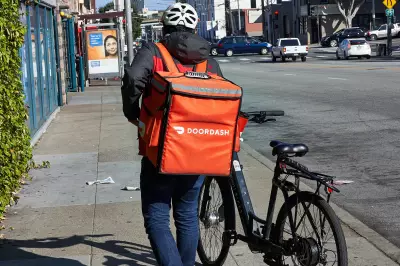BNPL Fraud Risks: Why 'Buy Now, Pay Later' Is a Target for Cybercriminals
Table of Contents
- Published: May 19, 2025
- Last Updated: May 19, 2025
Buy Now, Pay Later services offer a more flexible method for online purchases. Consumers aren't required to make an immediate, full payment; they can instead split the sum into a schedule that works for them.
These services work similarly to credit cards but do not incur interest fees over time. Most people have seen Klarna, Afterpay, or Affirm offered on Amazon or other e-commerce websites. They are the most popular BNPL providers, but the market is steadily growing.
Like all expanding online services, the BNPL model has attracted new cybercrime strategies. This lending method allows fraudsters to get around safeguards and make bold purchases with a lower risk of getting caught.

What Is Buy Now, Pay Later (BNPL) Fraud?
BNPL fraud is when a cybercriminal exploits a credit lender for financial gain. Bad actors utilize stolen identities and chargeback practices to abuse these services' relatively low-security application processes.
They use the provided credit to make exorbitant purchases without any intention of adhering to the installment plan. In most cases, this leaves the BNPL provider in the lurch, but it can also negatively impact someone's credit score if their identity is used.
How BNPL Fraud Works
There are two routes for BNPL fraudsters: targeting the consumer or the service provider. Both options can occur in many ways, but here are the most common types:
Stolen Identity Fraud
A stolen identity makes most online scams easier. Criminals steal the victim's personal information, including their Social Security number, billing address, and card information, to sign up for a BNPL service.
The falsified account becomes paired with the applicant's credit identity, which means that missed payments and increased debt damage the victim's score. Oftentimes, the fraudster signs up with their own phone number and email address.
The stolen information typically comes from the dark web. These databases are compiled from historical data breaches or other online scams, like phishing. Thus, the criminal doesn't have to personally trick someone into revealing their data.
Additionally, information frequently sits on the dark web for a long time before it is used for an attack. Many people stay alert for signs of identity theft for only a short time after hearing their data is compromised. So, it is often simple for an identity thief to stay under the radar for an extended period.
Synthetic Identity Fraud
Sometimes, a criminal can't steal all the information they need from one target. They may have the person's name and address but not their social security information. In these situations, they may commit synthetic identity fraud instead.
This tactic involves mashing together multiple people's information to create an entirely new identity. Other versions may combine real and fake information. The necessary details are quickly taken from social media profiles, vital records, and other public databases.
Synthetic Identity Fraud allows a criminal to create a seemingly believable account that cannot be connected to just one person. This type of fraud is especially dangerous to BNPL providers since they cannot even work things out with the victim because the 'person' does not exist.
Account Takeover Fraud
Account takeover (ATO) fraud occurs when a cybercriminal gains login privileges into an existing account. This type of fraud occurs frequently on social media to further phishing scams or harm the profile owner.
Hackers break into someone's BNPL service account and make fraudulent purchases. Credit card details are typically saved on the account, which is convenient for fraudsters.There are many methods for stealing someone's login information, such as phishing, credential stuffing, and keylogging malware.
It is not uncommon for someone to use the same username and password for all their accounts. Stealing the login credentials to one account can give the thief access to all of that person's online profiles.
The most prominent BNPL providers have built-in security that can detect when someone is accessing an account from an unfamiliar location. However, this technology isn't always reliable, as cybercriminals can spoof their location to circumvent the issue.
Chargeback Fraud (Friendly Fraud)
Chargeback fraud, sometimes called "friendly fraud," occurs when a consumer disputes a legitimate purchase. The fraudster contacts their bank or credit card company and has them reverse the transaction, pulling funds from the business that fulfilled the order.
These chargebacks can happen for just about any reason, such as saying the product didn't arrive or was damaged beyond use. Some institutions offer chargebacks simply because the consumer forgot they ordered the item and assumed it was a mistake.
BNPL services are a low-risk target for chargeback fraud. Users receive a product after only paying a fraction of its cost. Even if the chargeback fails, the fraudster has only paid a relatively small amount and can default the remaining cost through other methods.
Additionally, online transactions are more susceptible to chargeback fraud. It is more challenging to investigate fraud or product problems on online purchases, and siding with the consumer is often the safer choice.
Businesses suffer significantly from chargebacks. Repeated transaction reversals damage their professional reputation and lead to higher fees with their payment processors. In severe cases, some processors may stop allowing the business to accept credit card payments.
Merchant Fraud
Merchant fraud is a more sophisticated version of BNPL fraud. The criminal creates a fake online business that accepts BNPL payments. Consumers buy nonexistent products and pass the cost along to BNPL providers.
BNPL providers pay for products in full and wait for the consumer to reimburse them over time. When the consumer does not receive the product, they attempt to avoid paying the remaining balance.
This type of fraud affects consumers who never receive their purchases and damages the reputation of BNPL providers.
The Growing Risks of BNPL Fraud
BNPL options are growing more prevalent, increasing fraud opportunities while damaging consumers and businesses alike. Several factors contribute to BNPL fraud's escalating threat.
The Rapid Growth of BNPL Services
BNPL is quickly becoming a mainstream option. Early traction started with browser plugins constantly pushing the option during online transactions. Automatically showing a $300 charge cut down to $20 is a convincing tactic.
Now, rather than a browser plugin, many online retailers are integrating the option into their checkout processes. The more people and businesses that use BNPL, the more targets cybercriminals have to take advantage of.
Limited Credit Checks and Loopholes
BNPL is less thorough than traditional credit lines when it comes to credit checks. Providers want consumers to be able to quickly complete the application process, and a lengthy check may cause them to back out of the purchase.
Additionally, there are fewer identity verification measures, allowing fraudsters to create accounts with minimal information. These lower barriers to entry make it easy to quickly create multiple accounts to defraud businesses and offer little protection to consumers with stolen data.
Financial and Reputational Damage to Businesses
An increasing number of fraudsters targeting BNPL also means businesses are more likely to face this threat. E-commerce websites risk severe financial consequences every time a BNPL transaction falls through.
BNPL fraudsters often target high-priced items like electronics or luxury goods. They steal these products, leading to significant losses from manufacturing, shipping, and other overhead costs.
The forfeited sale isn't the only problem. Chargebacks incur fees from payment processors and potentially unfavorable terms in future contracts. Disputing every chargeback is also expensive, which leads most businesses to just accept the loss.
Lastly, repeated fraud incidents can damage a company's reputation. Individuals who have experienced fraud with a retailer are less likely to shop with that retailer, even if it wasn't the business's fault. They may even leave negative reviews, discouraging future consumers.
Consumer Debt and Financial Risks
Fraudsters steal people's identities to access BNPL services. This deceit connects the victim's credit score to the BNPL account, increasing debt and causing damage from any missed or defaulted payments. Victims of identity theft face increased financial stress and aren't always fully reimbursed after cases of fraud.
How To Protect Yourself from BNPL Fraud
There are many ways to protect yourself or your business from BNPL fraud.
For Consumers
Solid monitoring of your credit score and activity will allow most people to act quickly enough to prevent significant damage. You should keep an eye out for any unknown transactions or if any new credit lines are appearing on your report.
However, this is a reactive measure—the best preventative action is to initiate a credit lock on your information. A credit lock prevents BNPL providers from checking your credit report without your consent, so you will always know when someone is trying to buy something with your identity.
Credit locks are performed by calling the three major credit bureaus (Equifax, Experian, and TransUnion). You must request it from each bureau separately.
Stronger, more unique passwords and multi-factor authentication (MFA) will also reduce your risk of an account takeover. These measures make your credentials much harder to brute force and prevent one data breach from compromising every one of your online accounts.
For Businesses
E-commerce websites and BNPL providers can reduce their chances of fraud by implementing stronger identity verification and fraud detection tools. One of the most significant weaknesses of BNPL is that fraudsters aren't required to connect accounts to real people.
Including phone or email verification can heavily deter a fraudster's willingness to target your business or platform. In most cases, criminals won't even have the resources to attempt since it would require access to a physical device or breaking into an email account.
Artificial Intelligence fraud detection systems can also identify suspicious transactions and high-risk customers. These programs can learn patterns associated with how BNPL fraudsters shop and recognize customers with a history of chargebacks or suspicious behavior.
BNPL is rapidly growing in popularity, especially among younger generations. The general distrust toward traditional credit cards makes these no-interest options much more appealing. However, cybercriminals are also learning how to abuse the changing online shopping landscape.
Minimal credit checks and a fast approval process make BNPL an easy target for fraud. Individuals, businesses, and providers must take proactive steps to mitigate these risks or face severe financial losses.














